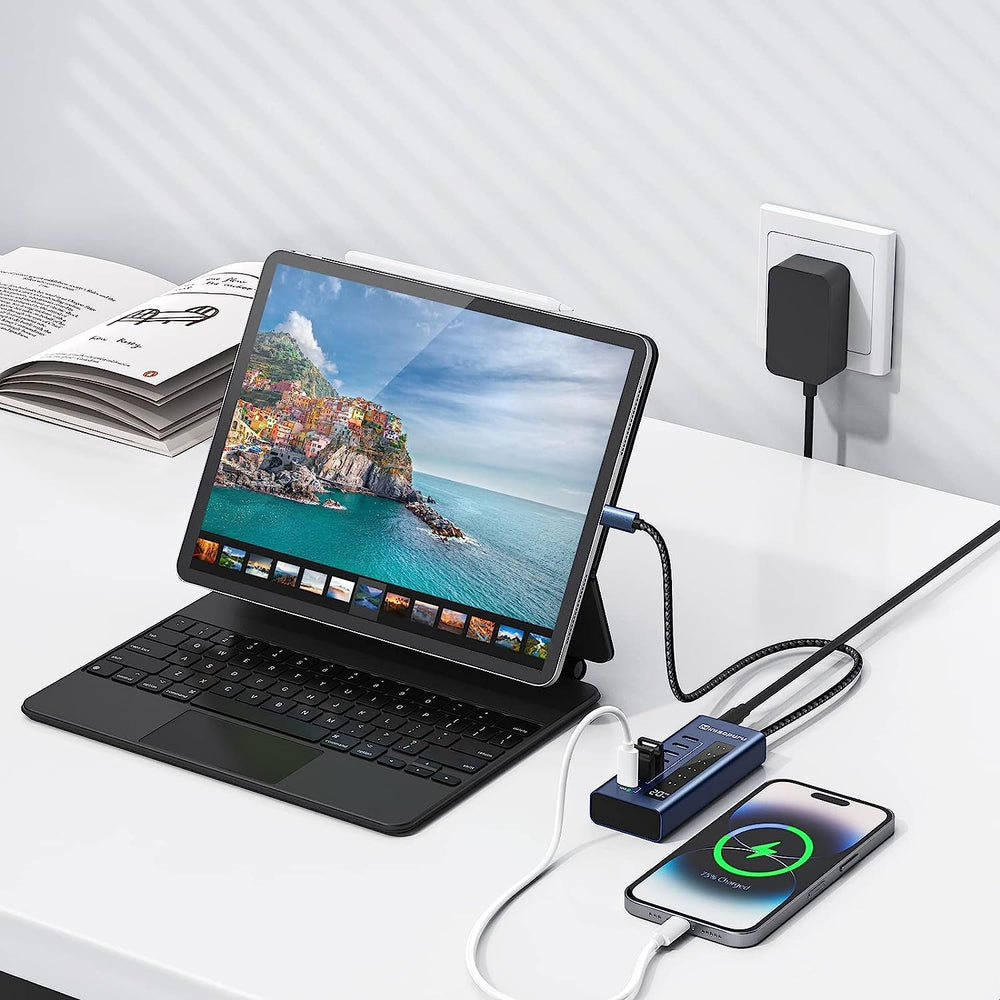Thunderbolt 4 and USB4 have now become the most common connection standards in mobile electronic devices such as laptops, computers, and docks. Thunderbolt 4 and USB4 both use USB Type-C connectors and are compatible due to many similarities in design and functionality. Both technologies also support 40Gbps data transfer speeds, video passthrough, and up to 240W power.
The upcoming Thunderbolt 5 design builds on Thunderbolt 3 and 4 and will support double the data rate to 80Gbps. With an asymmetric link supporting high-resolution DisplayPort output, Thunderbolt 5 can even deliver data rates up to 120Gbps, while still maintaining 40Gbps of simultaneous data transfer over a single USB-C cable connection.
The main difference between Thunderbolt 4/5 and USB4 is the minimum specification requirements. The following table uses a laptop computer as an example:
The upcoming Thunderbolt 5 design builds on Thunderbolt 3 and 4 and will support double the data rate to 80Gbps. With an asymmetric link supporting high-resolution DisplayPort output, Thunderbolt 5 can even deliver data rates up to 120Gbps, while still maintaining 40Gbps of simultaneous data transfer over a single USB-C cable connection.
How are TBT and USB4 related?
Intel's Thunderbolt 3 technology was first launched in 2017. The same protocol specification was subsequently contributed to the USB-IF in 2019, laying the foundation for the USB4 open specification released that same year. Intel went on to integrate TBT4 functionality into its CPUs, allowing a wider range of devices and accessories to be integrated into the TBT4 and USB4 ecosystem. Well-known laptops, computers, and accessories that support TBT3 and TBT4 include Apple MacBookAir, MacBookPro series laptops, Dell XPS series laptops, OWC TBT4 docking stations, and more. TBT4 and USB4 applications are also beginning to reference the same USB4 specification, including electrical, connectivity, and protocol aspects. In addition, after announcing that USB4 version 2 supports 80Gbps, TBT5 also begins to support USB4 version 2.The main differences between USB4 and TBT4
The main difference between the two standards is that the features supported by USB4 are mostly optional. This openness also allows the USB4 specification to be widely used in different applications. TBT4 makes this option a default feature for laptops and computer-related applications. Nonetheless, the similarities between the two standards have led to confusion among average consumers and even professional engineers and product designers. To convey the correct functionality to consumers and help manufacturers save resources spent on design, testing and debugging, let’s break down the differences between these standards.Differences between Thunderbolt™ 5, Thunderbolt™ 4 and USB4
The most basic requirements and specificationsThe main difference between Thunderbolt 4/5 and USB4 is the minimum specification requirements. The following table uses a laptop computer as an example:
| Host Minimum Requirements | Thunderbolt 5 | Thunderbolt 4 | USB4 |
| Speed | 25.6GBaud x2, 10.0G/20.0G x2, 10.3125G/20.625G x2 | 10.0G/20.0G x2, 10.3125G/20.625G x2 | 10.0G/20.0G x2 |
| Bandwidth | 80Gbps | 40Gbps | 20Gbps |
| Asymmetric Link | Supported (120G/40G) | Not Supported | Not Supported |
| Power provided by USB-C port | Min. 15W | Min. 15W | Min. 7.5W |
| USB3 Tunnel | 10Gb/s | 10Gb/s | 10Gb/s |
| PCIe Tunnel | 64Gbps (Gen4 x4) | 32Gbps (Gen3 x4) | Optional |
| DP Tunnel | DP2.1 (UHBR20), 2 monitors | DP1.4a (HBR3), 2 monitors | DP1.4a, 1 monitor |
| Monitor supported | Dual 6k | Dual 4k | One monitor (no minimum bandwidth) |
Benefits of getting Thunderbolt 4
Covers USB charging, high-speed data transfer and interoperability
While the data rate did increase to 20Gbps for TBT4 and 25.6GBaud for TBT5, the signal quality of components, PCBs, connectors and cables also dropped dramatically. To ensure the correct power levels are delivered from a TBT4 docking station or USB-C power adapter to a connected device or consuming power source, Intel TBT4 requires product vendors to obtain TBT certification before entering the market. This certification covers electrical testing, functional testing and multiple high-speed applications of TBT4/3 hosts, devices, accessories and cables to ensure the expected TBT4 experience for the end consumer.Meet consumer needs and realize market potential
The performance of Thunderbolt 4 provides a more attractive option for users looking for:- Backwards compatible with Thunderbolt 3
- Protect data security while connected through Intel VT-d based DMA
- Hosts supported by 11th Generation Intel Core i5 or i7 mobile processors with Intel Iris X graphics
- settings improve video and data transmission quality
- Improve battery life
- Supports connectivity accessories with up to four downstream Thunderbolt ports
- USB4 compatibility
- Creatives and marketers who need fast PCIe 32Gbps transfer speeds and large storage for the latest cameras
- Developers who use multiple monitors while coding or modeling
- Commonly productive workers who are increasingly using data-intensive AI programs to speed up their workflow

